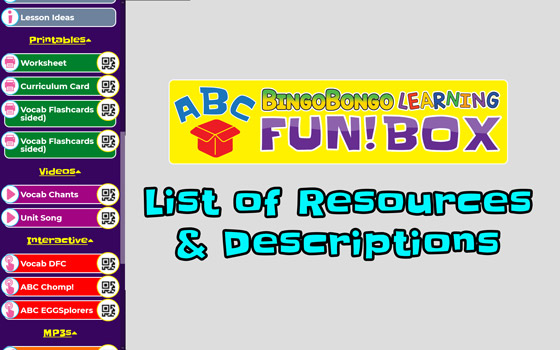Use the techniques we use at Step by Step Eikaiwa to help young children/students pass EIKEN Grade 5 English proficiency test
The EIKEN test is an English proficiency test used to determine a student’s ability to read, listen, and speak in English. The official EIKEN site says it’s “Japan’s most widely recognized English language assessment.” Students can take the test three times per year in Japan and at various designated locations around the world. It’s a great tool to measure a student’s overall English ability and to help motivate students to study English. At Step by Step Eikaiwa, almost every one of our students who has taken the EIKEN test has passed. In this guide we will talk about methods we use in our own English classes to help our students, who are young children, pass the EIKEN Grade 5 test.
First, however, we will talk about the advantages and disadvantages of using tests for studying English, as well as what age is best to start taking the entry level of the test, EIKEN Grade 5.
Question: Are standardized tests such as EIKEN good for evaluating language ability?
Using tests to evaluate proficiency and skill level is popular in Japan starting at a young age, continuing throughout professional careers for many adults. English tests are an important part of the junior high school system as well. There are entrance exams required to get into high schools and universities which put a lot of pressure on passing the tests to get accepted into schools of choice. This is a large topic of debate because the English section of entrance tests focuses heavily on reading and writing with little or no evaluation of speaking or conversation ability. This is one major reason that speaking and conversation practice are a lower priority, if not omitted from school curriculums entirely.
This current emphasis in the Japanese education system forces students to cram and memorize many different complex grammar points and expressions without having completely mastered them for conversation. As a result, many students learn to read and write English well, yet have no confidence to speak English. It can be a source of frustration for many adults who want to communicate in English as a second language.
The best approach to learning a language: the same way native speakers learn
In any language in any country, infants always learn their first words by listening, remembering, and finally speaking. After a child has a solid foundation to speak and communicate basic ideas, they learn to read and write those ideas, often starting around the age of five or six years old. Since the child already understands the meanings of words, reading and writing can be taught easily. If the child doesn’t know the words, however, it takes longer to learn them, and can be much more difficult to use the new words in conversation. This is exactly the dilemma of the Japanese education system mentioned above.
In order to avoid this problem when preparing for the EIKEN test, children should first learn words and their meanings through conversation-based techniques such as memorizing complete sentences in real-life situations, asking and answering questions from memory, memorizing and singing songs, and using conversational English in real life settings. At Step by Step Eikaiwa, we have designed our curriculum using ALL of these techniques, which gives places a greater priority on giving young ESL students confidence to speak in English. After that they learn to read and write faster, with more confidence. This is the key to passing EIKEN Grade 5 with ease while still having confidence to speak English.
Some useful points to pass EIKEN Grade 5
The following points can be used as a guideline to pass the EIKEN Grade 5 test. After students become familiar with the test procedure and pass EIKEN Grade 5, the same techniques can be applied to pass the higher grades.
01.Determine if taking EIKEN Grade 5 is appropriate for the level of the child/student.
EIKEN level 5 is the entry level of the test. It focuses on present tense verbs (“I eat bread every day.”), present participle verbs (“He’s swimming in the pool now.”), basic vocabulary, expressions of time, adjectives, and some other topics. You can find a complete list of the EIKEN Grade 5 requirements here.
At Step by Step Eikaiwa, we find that our students who use our original curriculum in group English classes, starting as young as two years old, can usually pass EIKEN Grade 5 when they are seven or eight years old. There are about 65 verbs that students must know, and our students have no problem using them in conversation. A useful online guide to the verbs on Eiken Grade 5 can be found here. (There are errors with the examples, however.) Keep in mind that the Japanese Ministry of Education’s elementary school English curriculum only teaches students a limited number of basic verbs such as “like,” “have,” “want,” and “play” by the time students graduate elementary school at the age of 11 or 12. Relying on the elementary school English curriculum will not prepare students to be confident at listening or speaking English, nor will students be able pass the EIKEN Grade 5 test.
02.Use fun worksheets, games, and activities with a similar format as the EIKEN test
The EIKEN test has a format that is difficult if students aren’t familiar with it. Of course taking practice tests is a great way to prepare, but that can be difficult or boring at first. So try to come up with games or activities to practice the content. There are numerous resources such as textbooks, YouTube videos, apps, and online resources. Step by Step Eikaiwa has produced a variety of teaching resources including songs, flashcards, crafts, worksheets, and games. These resources can be used to help students prepare for the EIKEN tests, but they also teach students how to speak natural English before learning how to read and write. Check out BINGOBONGO for all of our free resources.
3. Take practice tests
Working through practice tests is a good way for students to learn the unique EIKEN test format. Teachers can also evaluate if a student’s English ability is appropriate for taking the EIKEN Grade 5 test. Taking timed practice tests will also help students understand the amount of time they have to take the test. Past tests can be found online at various sites, including the official EIKEN website (click the PDF links).
4. Practice for the interview test

The interview tests for EIKEN are easy for students if they have enough practice. For EIKEN Grade 5, students look at a picture, read a passage, and answer simple questions such as “Where is the boy? What does he have?” If the students have a solid listening and speaking foundation before studying for EIKEN test, as we recommended above, the interview section is usually easy for them. The following video will give you an idea of the interview section format.

Additional considerations before taking EIKEN Grade 5
Remember to make sure that learning English is fun and useful, rather than simply learning how to take a standardized test. Young children/students especially can feel frustrated or overwhelmed by the test-taking process and lose interest in studying English.
We find that our students can usually pass EIKEN Grade 5 and Grade 4 as elementary school students. Grade 3 and higher typically have concepts and ideas that elementary school children have difficulty understanding even in their native language, Japanese. So make sure to prepare for the EIKEN test that is appropriate for the age of the child/student.
If you follow these guidelines, we think young children/students will be well-prepared to pass the EIKEN tests. It’s a great way to motivate children to study English and can feel very rewarding when passed. Of course nothing is more rewarding than having the ability and confidence to actually speak and communicate in English! Good luck!














